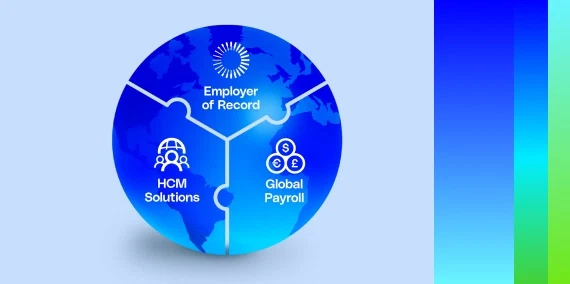G-P and Frost & Sullivan are aligned in their missions to guide the world’s top companies toward transformational growth. In the third segment of this webinar, Melanie Turek, Senior Fellow and Vice President of Consulting at Frost & Sullivan, and Dev Das, Vice President of Customer Experience and Operations at G-P, sat down to talk about onboarding global hybrid employees.
Are you looking to take your global hiring efforts beyond borders? You’re not alone – our recent Global Growth Report found 81% of businesses are already actively engaged in global recruitment.
While global hiring can unlock new business opportunities, it can also be costly and time consuming. With that in mind, you want to make sure the investment and the positive recruiting experience extends into the onboarding.
When you’re onboarding a new employee, make sure they feel valued and a part of the culture even if they are remote or in another country than you. Providing this world-class onboarding experience can bring common obstacles. Here are some of the key points the webinar explored:
- Making onboarding accessible to global employees.
- Creating a consistent employee experience.
- Finding different ways to present onboarding materials.
The good news is, an Employer of Record (EOR) helps you hire beyond borders, allowing companies like yours to bring on highly skilled talent, anywhere in the world, and enter new markets quickly, regardless of entity status. But what does onboarding global hybrid professionals look like, and what opportunities come along with it?
Making onboarding accessible to global employees
“The tools given to employees need to speak to a mobile world.”
In a global hybrid environment, making the onboarding process accessible to remote employees is easier than you might think.
If you make all the materials and training employees will need readily available online and across other frequently used channels, they’ll feel confident and supported as they onboard. This is especially important when working with team members across time zones that could be looking for insights, advice, or help at different hours of the day.
Encouraging new and existing team members to connect can also go a long way in helping to improve the onboarding experience. Remote employees can be siloed and removed from the relational aspect of work, so you may consider things like a virtual welcome session and orientation to acquaint them with other employees and make them feel like part of the team. Buddy or mentor programs are also great ways to build relational equity and keep global employees engaged with the team.
One final thing you may want to prioritize is offering regular check-ins and asking for feedback to help you make sure your employees are on the same page and have access to all the resources and people they need.
Creating a consistent employee experience
“Remote onboarding in a hybrid world requires companies to standardize their experience.”
It might surprise you to know that 66% of HR executives believe their department needs to do more to be prepared to manage a global team, and this includes standardization. Remote onboarding gives you an opportunity to scale your onboarding process and create uniformity across your company. This encourages you to think about what the company norm looks like, how communication is handled, how company culture is instilled, and how things like diversity and inclusion are emphasized.
All these lines of thinking actually give you the chance to improve your onboarding in a way you may not have otherwise considered. This standardization ensures all employees, regardless of location, receive the same foundational information about your company, its policies, and their roles.
Even though some policies may vary by region, all employees should receive a baseline knowledge of company expectations and global guidelines. Allowing for local cultural differences can help you ensure the standardization process promotes a company-wide culture of inclusion and belonging and a sense of unity among global teams. This cultural integration into a workplace is a crucial part of onboarding and can influence an employee’s perception of a company from day one.
Finding different ways to present onboarding materials
“Companies have a chance to rethink how they’re offering these learning experiences in different channels and allowing employees not just to access them later, but also to fundamentally absorb them in different and more effective ways.”
Each individual’s learning styles vary and are often influenced by cultural norms and expectations, so making onboarding, so making onboarding content available from multiple points of entry and in multiple forms is key to new employee success. Everyone is different, so whether it’s via reading, listening, engaging with video content, or hands-on activities, the global hybrid world allows you to meet employees where they are and best set each one up to thrive in their new role.
Onboarding strategies with interactive elements are a great way to engage employees and create a change of pace in the standard onboarding process. Think about online platforms that provide videos, quizzes, and simulations, or webinars and virtual workshops to make the hybrid onboarding experience feel more personal. All of these offerings can create a sense of community and inclusion, and benefit the remote employee while still driving home your company’s standard policies and expectations.
An employee’s effectiveness in a role begins with their onboarding experience. By making the resources and support accessible to global employees, creating a consistent experience, and finding different methods to present onboarding materials, you can ensure remote employees are set up for success and prepared to seamlessly integrate into their new role.
For more insights on engaging talent, embracing change, and uncovering the value of an Employer of Record, watch the full webinar here.
—
G-P and Frost & Sullivan share a common goal of guiding the world’s top companies toward global expansion and global success. Frost & Sullivan’s Growth Pipeline as a Service (GPaaS) value proposition allows customers to maximize their economic potential, navigate emerging megatrends, and shape a future based on sustainable growth.
G-P’s industry-leading Employer of Record (EOR) solutions and global employment products help companies plan, hire, and manage global teams in 180+ countries, without setting up new entities. Stay tuned as we continue to lead the conversation around the future of work and the path to global growth with insightful conversations like these.











